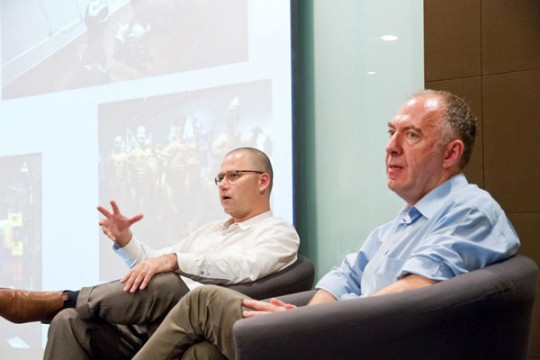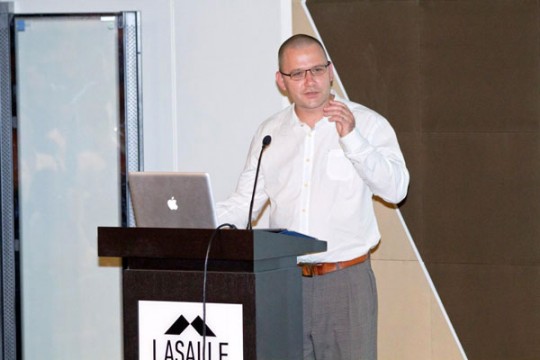The first distinguished speaker of the Annual lecture was Dr Thomas J. Berghuis who delivered a lecture titled ‘When was Asian Art, History?’ – Collective Approaches to Contemporary Art, With Case Studies in China and Indonesia.
Dr Thomas J. Berghuis is a Lecturer in Asian Art at the University of Sydney. In 2010 Dr Berghuis became the Deputy Director of the Australian Centre for Asian Art & Archaeology (ACAAA) and a Committee Member of the newly founded China Studies Center (CSC) with the University of Sydney, leading a research group on Cultural Policy and Heritage in China. Dr Berghuis is the author of Performance Art in China (Hong Kong: Timezone 8, 2006), which has been praised internationally for drawing well-needed attention to what was often still considered an unknown subject in Chinese contemporary art.

Dr Berghuis with moderator Dr Charles Merewether, Director, Institute of Contemporary Arts, Singapore
In his lecture, Dr Berghuis discussed his current research on ‘collective approaches to contemporary art’ as they can be witnessed in collective practices and experiences of contemporary art – linking art, politics and the aesthetics of everyday life and causing the potential democratization of contemporary art through ‘experimementation’ and ‘play’. The lecture drew on two case studies, connecting collective approaches to contemporary art in China and Indonesia. The first case study considers the role of ‘criticality’ in relation to Chinese experimental art at the turn of the new millennium – when artists and art critics challenge the position of conceptual art and the art market in favor of producing a critical experimental art for China, and reconsider the position of art in relation to social change.
The second case study examines the role of artists’ collectives and artist-led-initiatives in the overall development of contemporary Indonesian art at the start of the twenty-first century. It will be argued that these collective initiatives not only bring a radical change to thinking about art as an autonomous sphere of practice that is separate from the world of politics, culture and society. Instead they provide the means with which to reconsider the actual folding of artistic autonomy and heteronomy. Collective approaches to contemporary art thus constitute the event, agency and object of contemporary art to be part of a collective network of exchanges. As these collective exchanges are continuous and ongoing they concern both the historicity and futurity of contemporary art.


